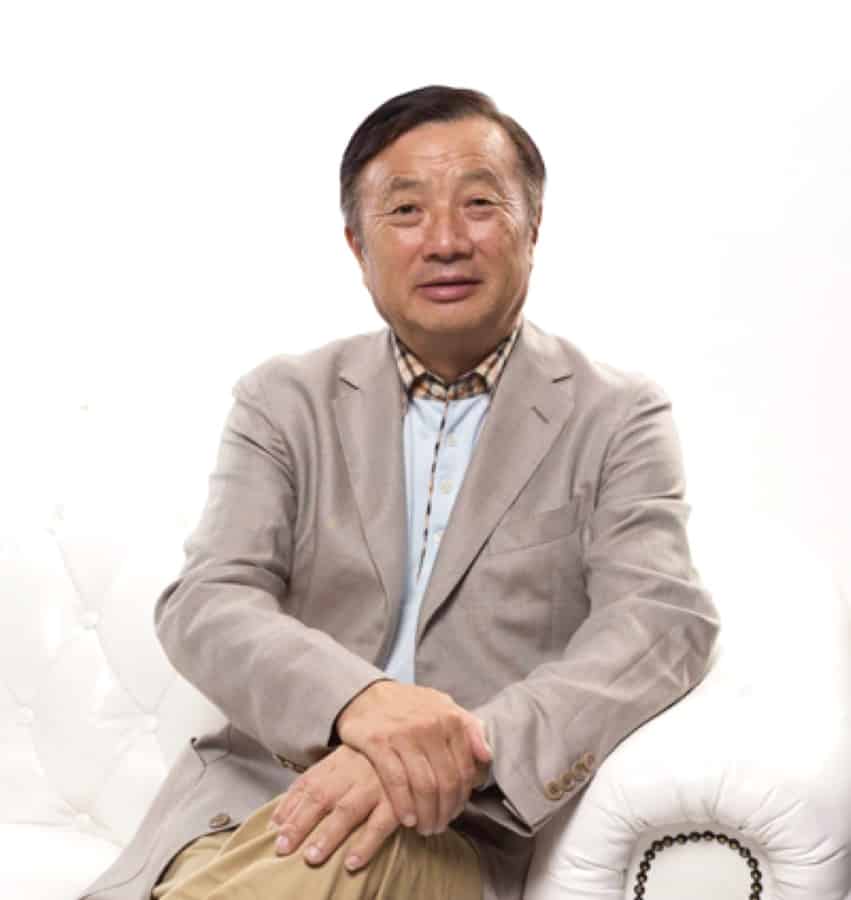
Above: Huawei founder Ren Zhengfei. Photo courtesy Huawei.
BitDepth#1198 for May 23, 2019
Huawei’s problems with the US government reached a critical point last week when the company was put on the Entity List, a document that lists companies that US companies cannot do business with unless they have a special government license.
The Trump administration first declared a limited national emergency, allowing the Secretary of Commerce to block technology transactions that were deemed national security risks.
Then it put Huawei on the blacklist.
Huawei has since been granted a 90-day limited reprieve that allows it to push updates to existing phones.
Google was the first company to go public about curtailing business with the Chinese company.
Other companies, notably chipmakers Intel and Qualcomm, then announced that they would no longer supply Huawei with their hardware designs.
It’s the most powerful salvo yet in a quiet but undeclared war by the US on China’s ascendancy in technology and while much is being made of Huawei’s mobile phone business, the target is likely to be much bigger.
Huawei has been waiting to roll its technology out globally as the migration from 4G begins.
Since 2017, the Trump administration has been cross-examining US trade with China and in 2018, imposed tariffs on US$200 billion worth of Chinese products. China responded with tariff hikes on $60 billion in US imports.
The tax tit-for-tat stopped briefly in December 2018, but the US has now more than doubled its tariffs on Chinese imports.
Huawei has set sales revenue this year at $125 billion and expects some of that revenue to come from the billions that it has invested in developing 5G infrastructure, which it has built in ten countries and hopes to build in 20 more by 2020.
Huawei has been waiting to roll its technology out globally as the migration from 4G begins.
Trinidad and Tobago has long been an infrastructure customer of Huawei, which has operated locally for the last 13 years and built large chunks of this country’s 3G and 4G network.
The first response to this rising tech profile was an accusation that the company’s hardware was capable of spycraft through hard-coded backdoors.
That has not been conclusively proven to date with any public revelations and similar backdoors have been found in US built equipment.
The US has also carried on extensive digital surveillance for anti-terrorism using the Internet since 2007 under the code name PRISM. US officials claim that PRISM cannot be used on US citizens without a warrant.
Much of the fear surrounding these claims was stirred by an October 2018 Bloomberg article which told the story of tiny chips inserted built into Supermicro server motherboards in China that left them vulnerable to attack and control.
In a statement, The Brunswick Group, acting on behalf of Supermicro, pointed out that: “…industry and government security experts have called the story into question and Tim Cook (CEO of Apple), Andy Jassy (CEO of Amazon Web Services) and Supermicro’s CEO have all called for Bloomberg to retract its story.”
Then Huawei’s Chief Financial Officer Meng Wanzhou was arrested six months ago in Vancouver, Canada on charges of bank fraud, wire fraud, and violating U.S. sanctions on Iran. She has been under house arrest in Canada ever since.
Both Huawei and Samsung already have their own software distribution platforms available on their devices.
Huawei may not say much in their press releases on the matter, but they act quickly and decisively. By March 2019, they had opened the Huawei Transparency and Cybersecurity Center in Brussels, keen to allay fears through more open operations.
These actions won’t help the company if it is being used as the nail to hammer home US displeasure with China’s business growth and strides in the technology sector.
China, it should be noted, has long frozen out US tech companies, including Google and Facebook, supplanting those services with homegrown alternatives and operating parallel Internet services for decades.
Huawei has been stockpiling critical parts from US companies, but without access to current Android updates, the Play Store or Google’s popular apps, the company will be forced to either leave the mobile market or design and build its own internal chips and software service platform.
The company can access code from the Android Open Source Platform, but that codebase lags current development of the OS significantly.
The company manufactures the Kirin processor used in most of its phones, so it is certainly capable of doing both, but that solution doesn’t help with its plans for 5G hardware dominance.
Both Huawei and Samsung already have their own software distribution platforms available on their devices, though neither boasts the breadth or depth of the Play Store.
In a March interview with Germany’s Die Welt, Huawei’s Richard Yu announced bluntly that the company has a replacement OS for both Android and Windows, one it has been developing since its troubles began in 2016.
That may allow Huawei to survive, but it will also sow the seeds of further balkanization of technology platforms, which won’t serve technology’s growth and evolution.
[Editor’s Note] This story was updated on May 24, 2019 to include a statement from The Brunswick Group, representing Supermicro, that seeks to bring additional perspectives on the Bloomberg story referenced here.



